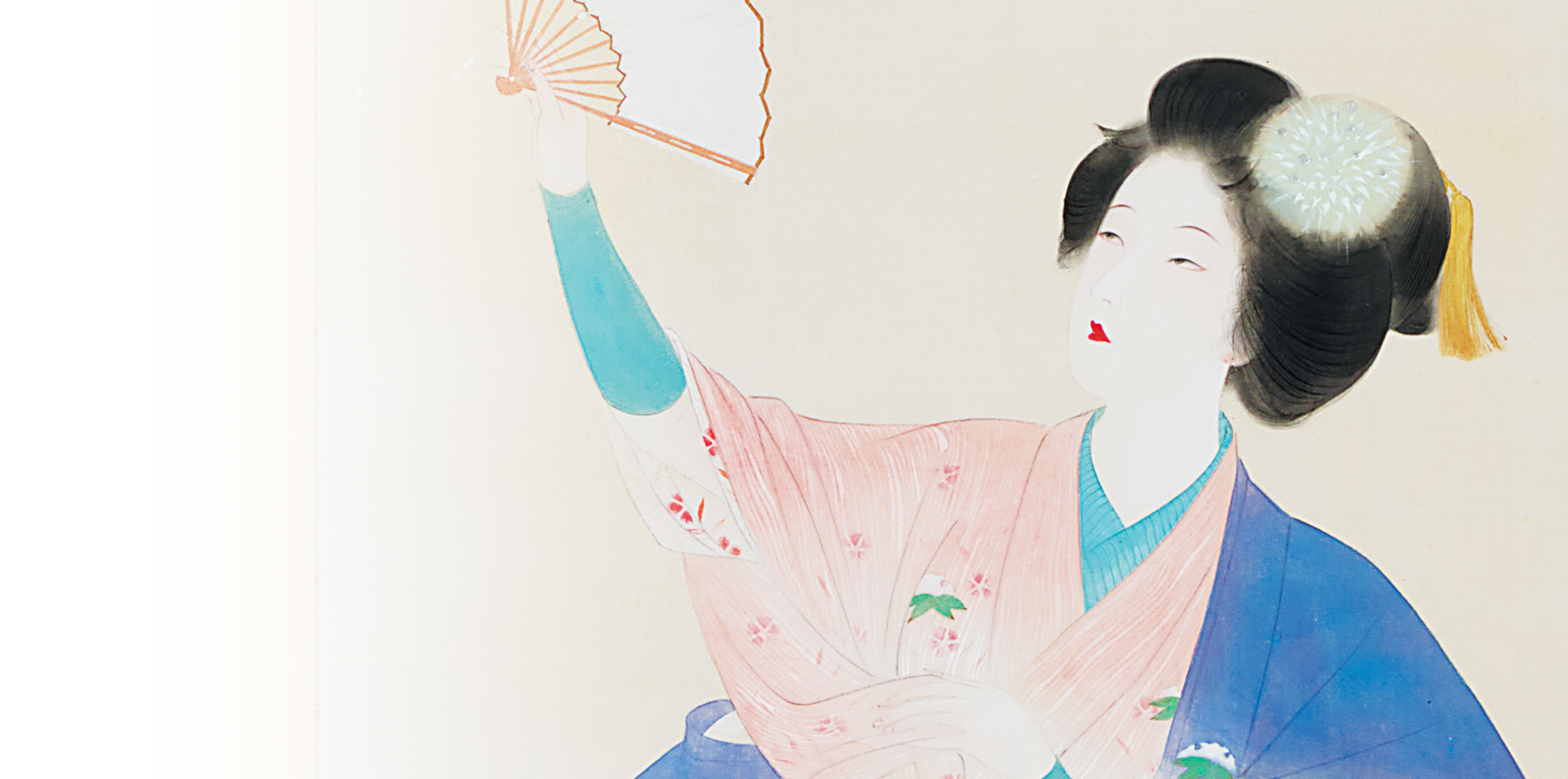Color on silk, framed, exhibited at “The 145th Anniversary of Izumi Kyōka’s Birth: the Art of Kiyokata for Kyōka’s World” at Kaburaki Kiyokata Memorial Art Museum in 2018, illustrated in “A Panorama of Shisei Exhibition (Pre-war Part)” published by Yagishoten
104×42㎝ / 122×60㎝
Vol.05 Kaburaki Kiyokata, Suigei
At last, the focus of this month’s essay is Kaburaki Kiyokata’s work.
Even more, the piece is based on Izumi Kyoka’s novel.
I am a big fan of, both, Kaburaki Kiyokata and Izumi Kyoka, so I am very happy to be talking about their works.
The painting, “Suigei”, depicts a woman called Taki no Shiraito (lit. The Water Magician) from Kyoka Izumi’s 1987 novel “The Righteous and the Chivalrous” (Giketsu Kyoketsu).
The main characters of the novel are Shiraito, a traveling entertainer, and Murakoshi Kinya, a young carriage driver and aspiring lawyer.
Initially, I enjoyed reading about the traveling entertainer and the young law student, which carried a highly Meiji-like mix of traditional and modern tropes. However, by the latter half of the novel, a series of shocking scenes unfolded that, for a while, left me in deep shock.
This work was set during the Meiji period, a time of great change. During this dramatic period, there must have been those who changed with the times, and those who could not.
While Kiyokata’s work might be seen as a depiction of a scene where Shiraito performs water magic, those who know the story may see more to the work.
The main character, Shiraito, is described as the most beautiful woman in the Hokuriku region, and her water magic skills attracts attention everywhere she visits.
She is portrayed as a strong and cool woman, so I’m sure she was like that when she performed, however, something about Kiyokata’s Shiraito feels more delicate and ephemeral.
Could this be because of the way her snow-white skin peeks through her pink, thistle patterned summer furisode? Or is it the color of her clothing? Maybe her facial expression?
In contrast with Shiraito’s appearance, the vigorous stream of water forming above her seems to foreshadow the misfortune that awaits her. Furthermore, Shiraito was a woman who lived alone and who had no relatives. Therefore, even if she did earn a lot, she wouldn’t be able to pass on her wealth and this must have made her very lonely even when she was performing.
As a reader, lover, and, throughout his teens, an illustrator of Izumi Kyoka’s novel (he was 23 at the time he made the work), we can assume that Kiyokata’s Shiraito was drawn with a great understanding of the story and its context.
Mademoiselle Yulia
Mademoiselle Yulia rose to prominence as a DJ and singer in her teens. In recent years, she has grown widely active as a kimono stylist, model, columnist, awards judge, and has become the face of numerous global campaigns of widely known brands. Yulia graduated from Kyoto University of the Arts in 2020 and styled the visual campaign for the Victoria & Albert Museum’s exhibition, Kimono -Kyoto to Catwalk-.
https://yulia.tokyo/


